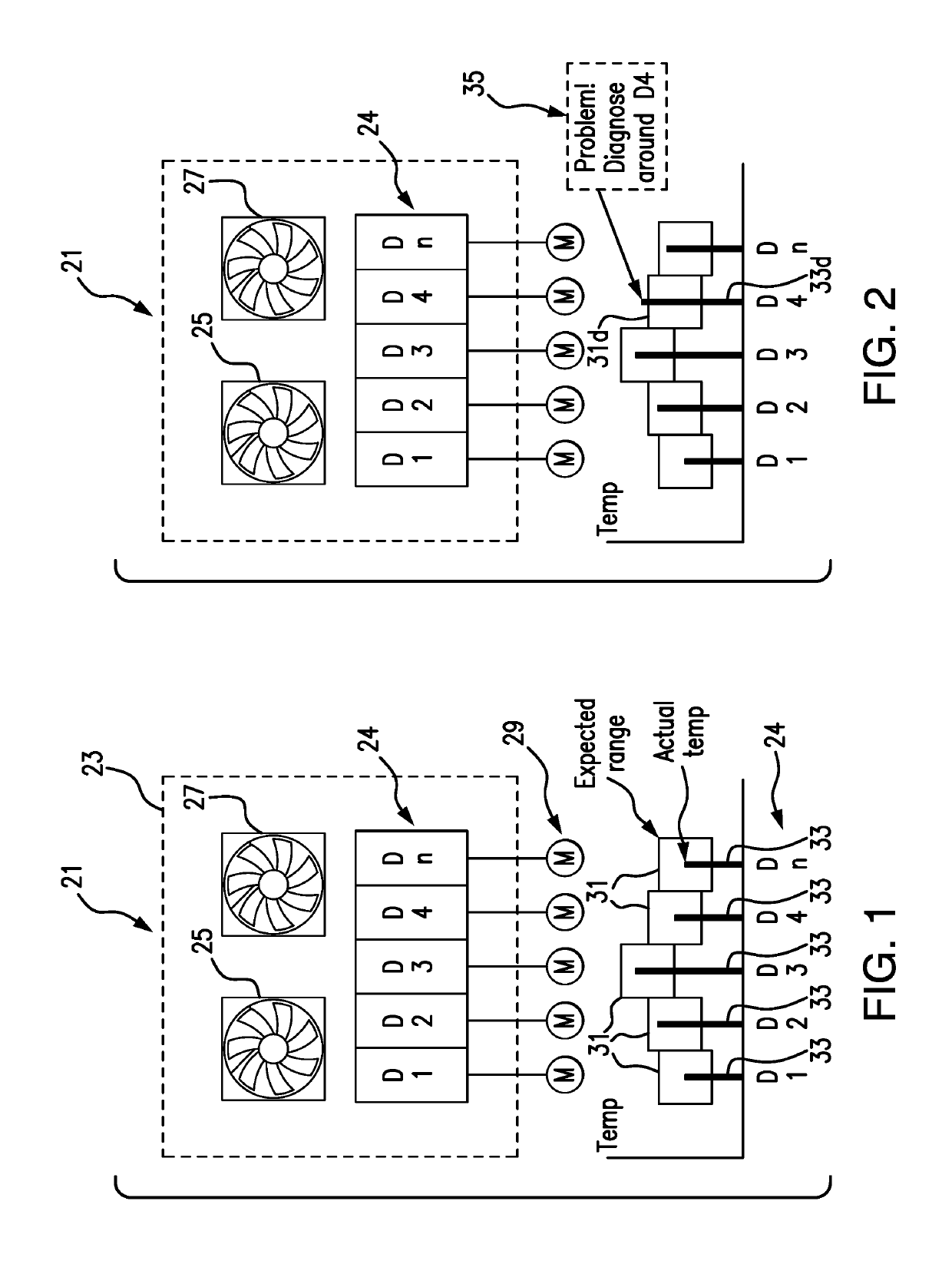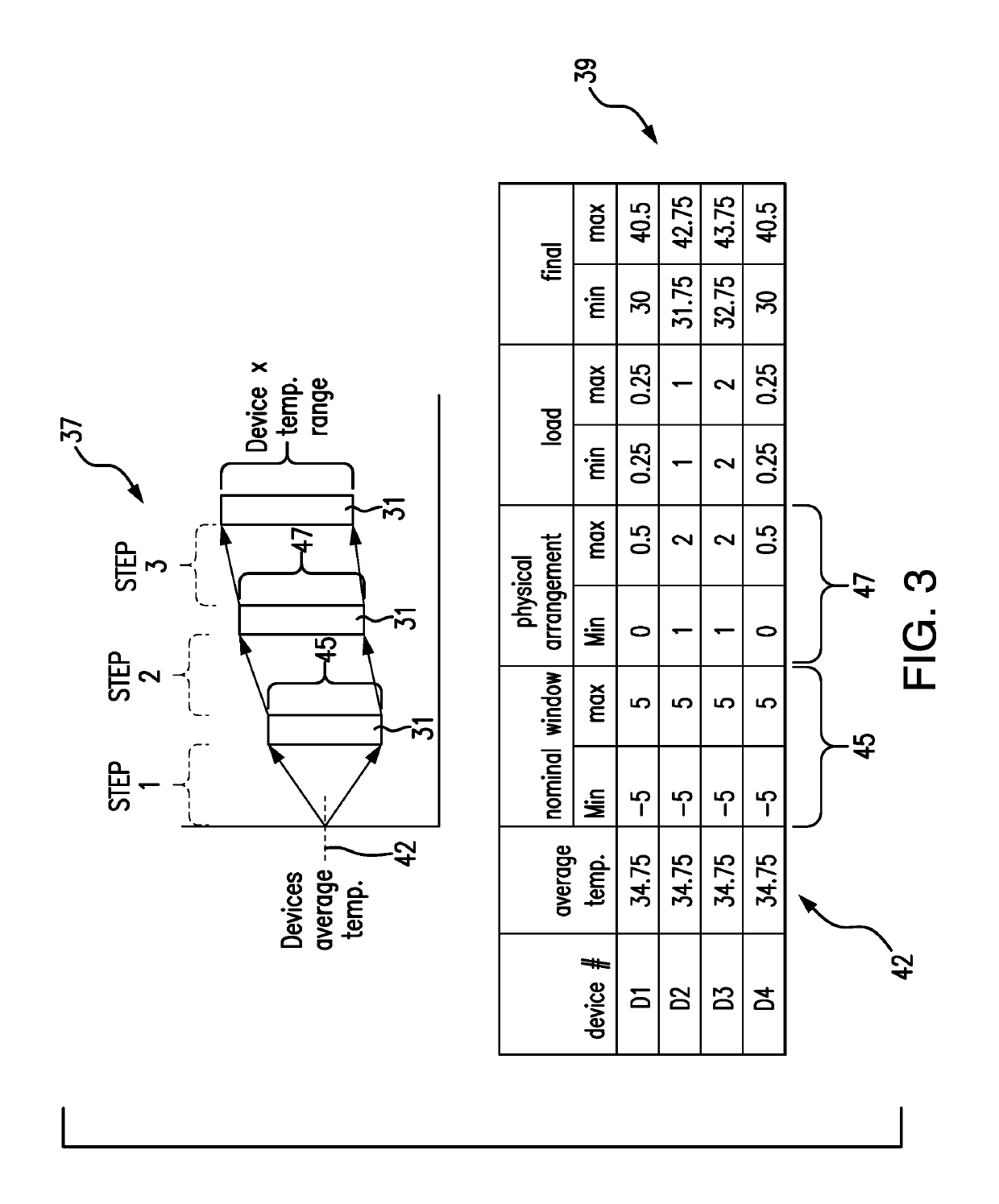Temperature-based diagnostics method for a starter island
a technology of starter island and temperature-based diagnostics, which is applied in the direction of electric/dynamo-electric converter starters, control systems, dynamo-electric converter control, etc., can solve the problems of increasing the incidence of heat problems, affecting the maintenance effect, and presenting not much functionality for preventative maintenance purposes
- Summary
- Abstract
- Description
- Claims
- Application Information
AI Technical Summary
Benefits of technology
Problems solved by technology
Method used
Image
Examples
second embodiment
[0027]FIG. 5 illustrates the invention whereby the same data is collected, but rather than absolute values, the temperature changes are tracked 63 against the change in operating load 65 over time whereby an expected correlation of temperature change from a change in operating load is developed 67. Further, as at step 66 indicated in both FIG. 5 and FIG. 6, while one can get along with the basic algorithm of FIG. 4 which just uses a + / −1° C. adjustment per neighbor, the algorithm for each embodiment may benefit by taking into account the temperature and / or current consumption of its neighbors, i.e. other motor starters grouped within the plurality of motor starters, in order to further refine the expected temperature range of the individual starters. In place of absolute values, the changes to these values may be used, since any of these values may affect the expected operating temperature range of the subject starter. Load and Operating Temperature of the starter are periodically a...
third embodiment
[0028]FIG. 6 illustrates the invention whereby the same data is collected as in the previous embodiment and the rate of temperature change 77 is also tracked as an indicator of starter system health. Load and Operating Temperature and rate of temperature change for the starter are periodically and routinely taken and compared to the recorded values for the starter and a range for rate of temperature change is developed 77. If the rate of change of the operating temperature is outside 79 of the normal range, a diagnostic warning 81 is issued to the operator of the starter island so that effective preventive maintenance or investigation may be begun. If the starter operating temperature is inside 83 of the correlation range, a diagnostic warning is not issued 85. This embodiment adds detection coverage for problems causing high rates of temperature change, but not necessarily temperatures that are out of range (e.g., an instantaneous drop of 20° C. may be within acceptable range, but ...
PUM
 Login to View More
Login to View More Abstract
Description
Claims
Application Information
 Login to View More
Login to View More - R&D
- Intellectual Property
- Life Sciences
- Materials
- Tech Scout
- Unparalleled Data Quality
- Higher Quality Content
- 60% Fewer Hallucinations
Browse by: Latest US Patents, China's latest patents, Technical Efficacy Thesaurus, Application Domain, Technology Topic, Popular Technical Reports.
© 2025 PatSnap. All rights reserved.Legal|Privacy policy|Modern Slavery Act Transparency Statement|Sitemap|About US| Contact US: help@patsnap.com



